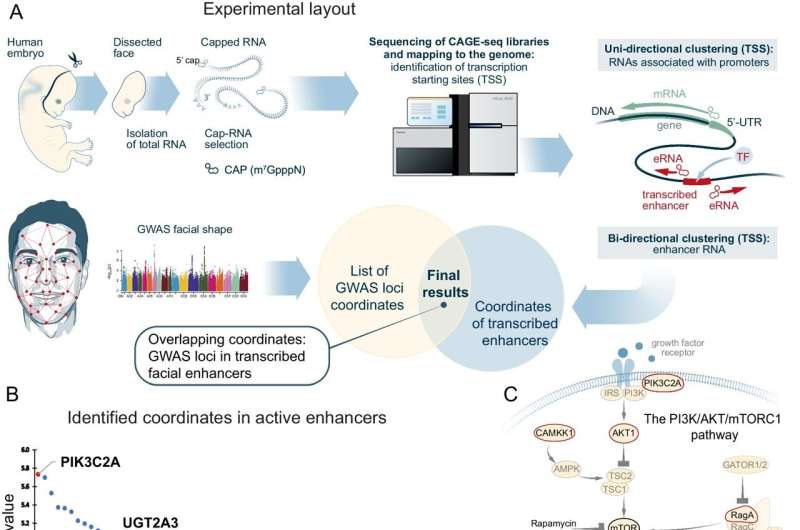
An international team of researchers has found that the amount of protein consumed by pregnant women can impact the facial development of their offspring. In their study, published in the journal Nature Communications, the group sequenced genes from human embryonic facial tissue and conducted experiments with mice and zebrafish.
Prior research, along with anecdotal evidence, has shown that heredity plays a major role in determining what a person’s face will look like. But some research has shown that other factors, such as environmental conditions during pregnancy can have an impact, as well. In this new effort, the researchers wondered if the diet eaten by pregnant women could have a subtle impact on the development of the face of their unborn child.
To find out, the research team began by sequencing facial tissue taken from human embryos. They found enhancers that were related to genes that have previously been associated with the mTORC1 pathway, which is known to play a major role in the way cells process food. Their findings suggested that the pathway plays a role in modulating early-stage skeletal formation.
To find out what sorts of modulation might be occurring, the researchers conducted experiments on mice and zebrafish—in some cases, they activated the pathway affecting facial structure and in others, they deactivated it. They compared those with modified pathways with those without.
Among the differences, they found that activation of the pathway led to thicker than normal nasal passages and larger than normal facial features. Deactivation of the pathway, on the other hand, resulted in zebrafish with a longer than normal face, and in mice, the result was a larger snout.
The team then tested whether diet might play a role. Suspecting that consumption of protein may activate the mTORC1 pathway, they fed a group of mice a high-protein diet. Testing showed differences in signaling compared to mice fed a normal diet—the embryos of those given the extra protein had lower than normal jawbones and larger than normal nasal capsules.
The research team concludes that maternal diet can impact facial development. The finding also suggests that other parts of the diet could be impacting fetal development in ways that have yet to be found.
More information:
Meng Xie et al, The level of protein in the maternal murine diet modulates the facial appearance of the offspring via mTORC1 signaling, Nature Communications (2024). DOI: 10.1038/s41467-024-46030-3
© 2024 Science X Network
Citation:
Amount of protein consumed by pregnant women modulates the facial appearance of offspring, study finds (2024, March 28)
retrieved 28 March 2024
amount-protein-consumed-pregnant-women.html
.
. The content is provided for information purposes only.
